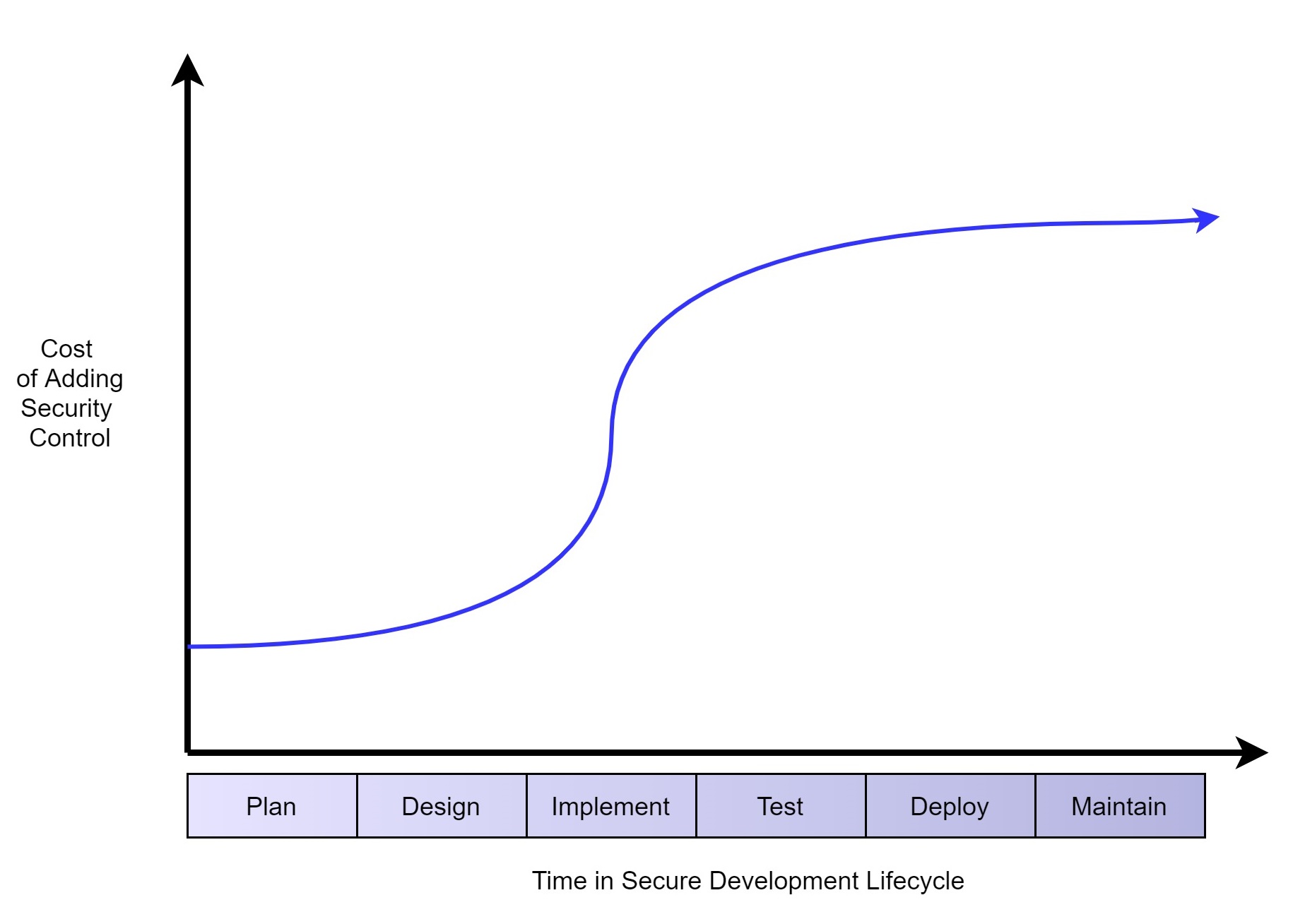As we all know, success starts from good planning, and failure is caused by weak planning.
The same thing applies to your security posture, as soon you start good planning of your security, your system will be more secure.
In the software development lifecycle, there is an important phase where you design your system. It will include the architecture and the detailed design.
Let's take an example.
You are developing a healthcare system, you have been working on it for a year, and just before the release, you understand that the HIPAA regulation requirements: that all your repositories must be protected at Rest (D@RE). And now at the last moment you find that the repository you choose is incompatible with the regulatory requirements.
You will need to replace the repository with a compatible one, change all the code that calls the repository, and of course, retest everything.
It may take months…
The following figure represents how the Development Lifecycle timeline impacts the cost of implementing security

The figure shows how the cost of adopting security controls increases significantly when you go out from the design phase into the implementation phase.
The reason is that any changes after the design phase will dramatically impact the cost. Because the team now has to pause development, investigate and spend time on rework. Extra time spent = money spent.
Conclusions:
1. Empower your architects and designer to think about security as early as possible
2. Ensure your organization has secured design control as part of its secure development lifecycle.
Stay safe,
Tomer